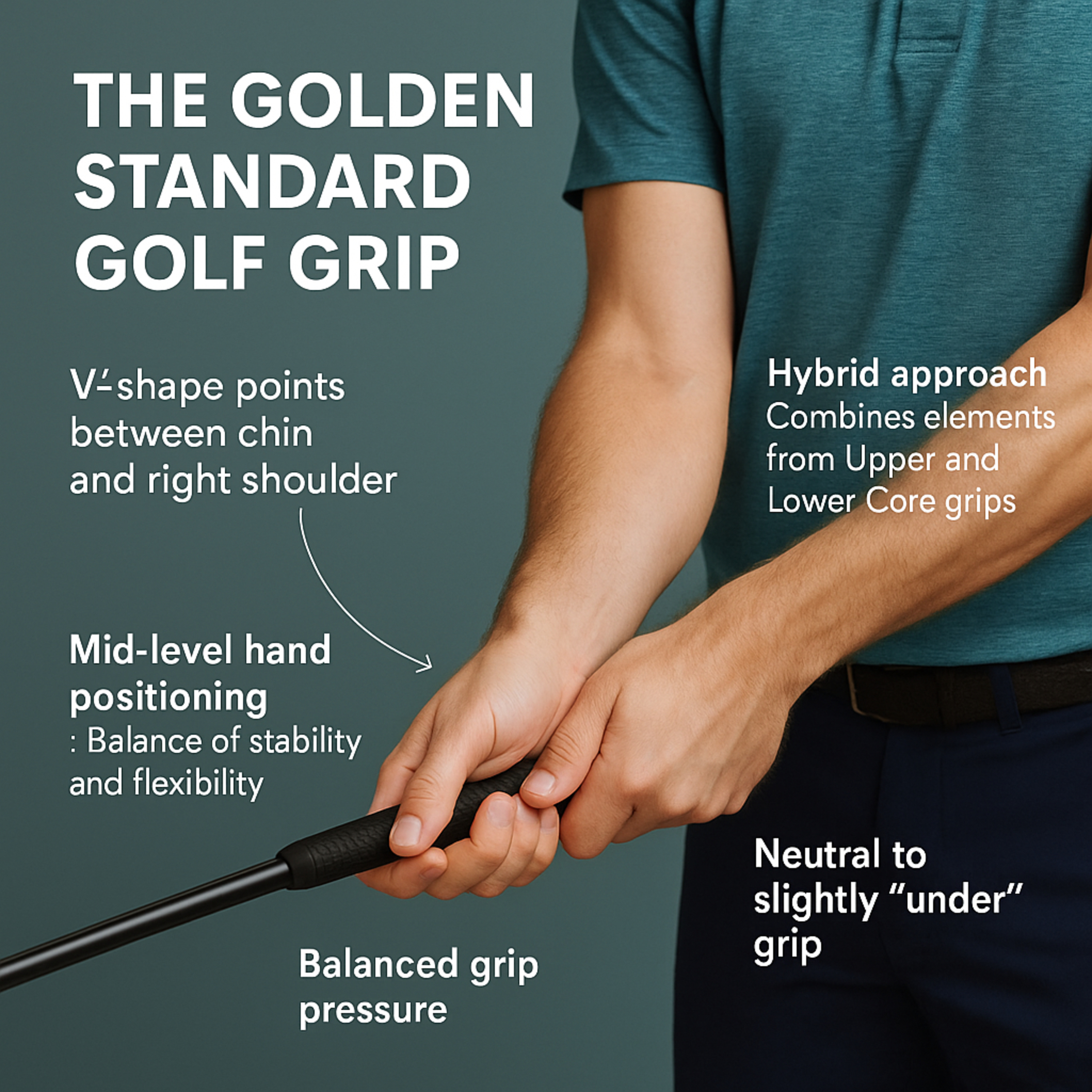#237 Middle Core golfe: The Golden Standard Golf Grip
- Author
- Golf247.eu
- Published
- Wed 28 May 2025
- Episode Link
- https://podcasters.spotify.com/pod/show/puttin-pro/episodes/237-Middle-Core-golfe-The-Golden-Standard-Golf-Grip-e33dmb3
This Podcast describes the Middle Core golfer's grip as the "Golden Standard," representing a hybrid technique that seamlessly blends elements from both Upper and Lower Core grips. Key characteristics include a mid-level hand position for stability and flexibility, a neutral to slightly “under” grip that combines power and control, and balanced grip pressure for fluid energy transfer. The source emphasizes the Middle Core golfer’s synchronized body, arm, and hand action, highlighting how this approach offers versatility and efficiency for consistent and powerful swings.
Based on the sources, the Golden Standard Grip, characteristic of the Middle Core golfer, is described as a perfect hybrid that integrates essential elements from both the Upper Core and the Lower Core styles. This integration creates a grip that serves as a solid foundation for the swing and is considered the golden standard of the modern golf swing.
Here’s how the Golden Standard Grip integrates elements from other styles:
Hybrid Approach: It combines the stability of the Lower Core grip with the fluidity and precision of the Upper Core, resulting in a grip that is adaptable, consistent, and reliable under pressure.
Mid-Level Hand Positioning: The grip features a mid-level hand positioning, which offers a balance of both stability and flexibility. It is neither too upright nor too shallow, reflecting a middle ground where power meets control.
Specific Hand Placement:
The left hand typically assumes a neutral to slightly rotated-in position.
The right hand tends to sit under the shaft, but not as exaggerated as in the Lower Core grip. This creates a neutral to slightly “under” grip.
V-Shape Alignment: A signature hallmark of the Middle Core grip is that the V-shape formed by the thumbs and forefingers of both hands points somewhere between the chin and the right shoulder.
Balanced Grip Pressure: Unlike the firm hold of Lower Core players or the softer grip of Upper Core players, Middle Core golfers apply a moderate grip pressure. This balanced tension ensures a fluid energy transfer.
Swing Synchronization: Middle Core golfers utilize a synchronized combination of body rotation, arm swing, and hand action, drawing on elements from both Upper and Lower Core styles to achieve a swing that is both powerful and precise.
In essence, the Golden Standard Grip embodies the principle of balance in the golf swing, leveraging the strengths of both Upper and Lower Core styles to create a grip and swing that is versatile and efficient. It efficiently channels power from the lower body while maintaining precision and control through the arms.
Based on the sources, the grip pressure that characterizes the Middle Core grip is moderate. Middle Core golfers apply a balanced grip pressure, contrasting with the grip pressure of other styles: Lower Core players have a firmer hold, while Upper Core players prefer a softer grip. This balanced tension ensures fluid energy transfer through the swing, enabling both consistency and power at impact.
Based on the sources, the positioning of the left and right hands in the Middle Core grip (the Golden Standard Grip) is described as follows:
The left hand typically assumes a neutral to slightly rotated-in position.
The right hand tends to sit under the shaft, though this is not as exaggerated as in the Lower Core grip. This positioning creates a neutral to slightly “under” grip.
A defining characteristic of this grip is that the V-shape formed by the thumbs and forefingers of both hands points somewhere between the chin and the right shoulder.
This hand positioning contributes to the mid-level hand positioning of the grip, reflecting a balance where power meets control. It helps to efficiently channel power from the lower body while maintaining precision and control through the arms.
